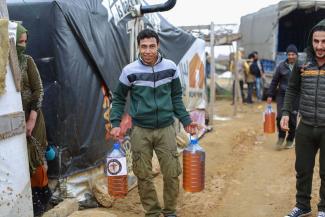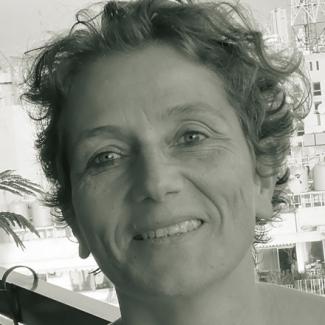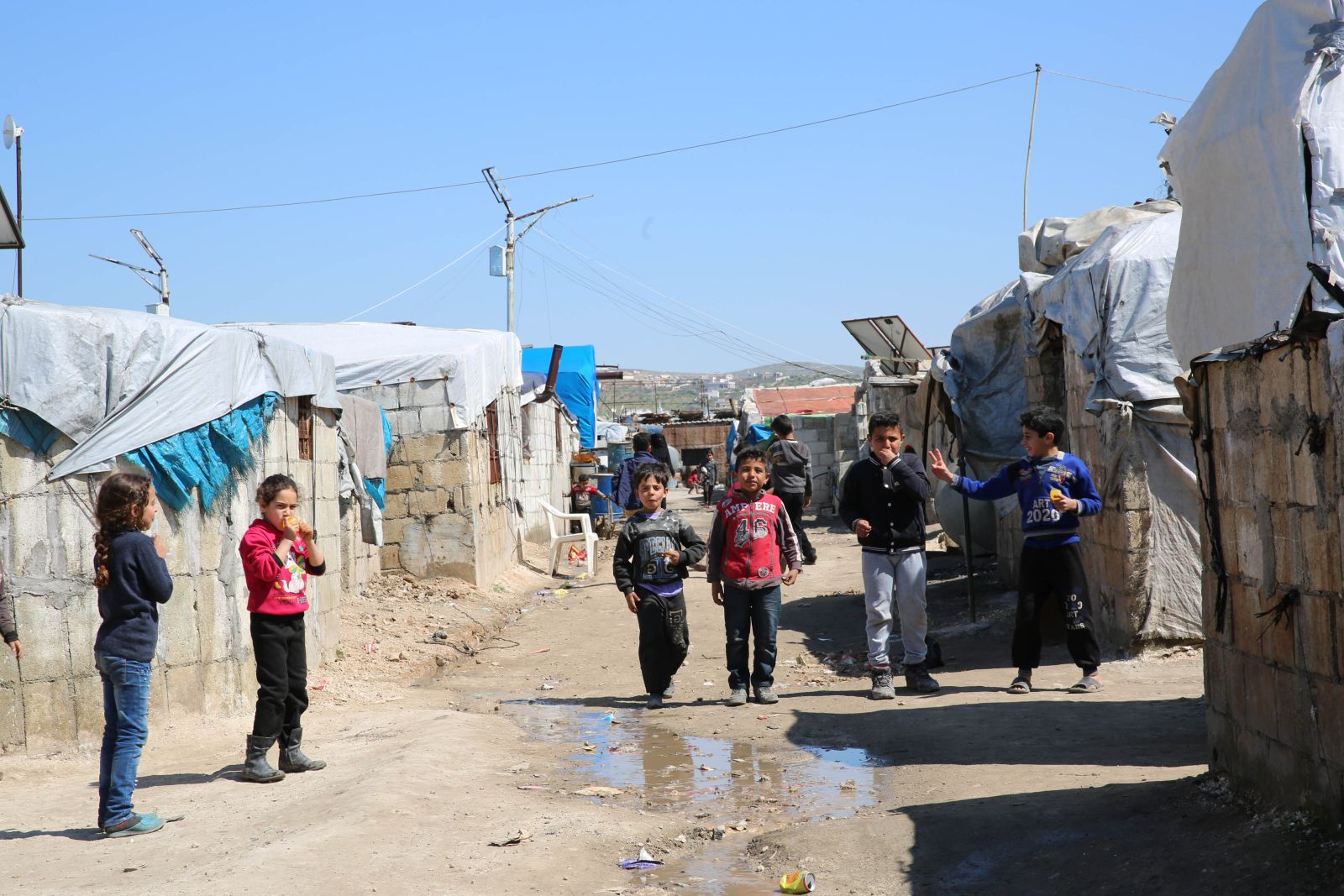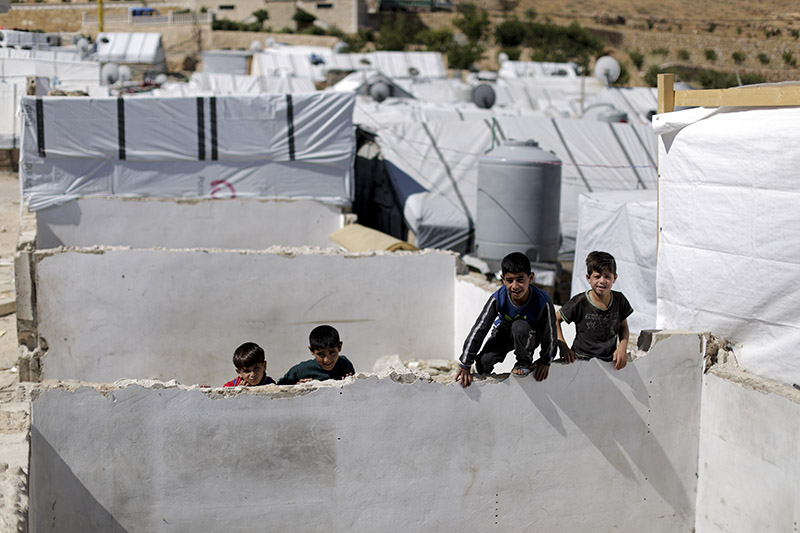Refugees in Lebanon
Poverty and a lack of rights

The Lebanese greeted the formation of their new government at the end of January with fireworks and celebratory gunfire. Over eight months of political crises had finally been overcome. The people hoped that this step would have a positive effect on the economy. However, Syrians in Lebanon had less reason to celebrate. The new Minister for Refugee Affairs, Saleh Gharib, belongs to the faction in the Lebanese government that is loyal to Syrian President Bashar al-Assad.
Correspondingly, Gharib’s first official act was not, for example, a visit to one of the many informal camps for Syrian refugees, but rather a whirlwind trip to Damascus. While there, he went along with the Syrian government’s official pronouncements that Syria was now safe and that everyone could return. This visit caused concern among refugees. They are very worried that they could be forced to repatriate.
Since the beginning of the conflict between the Syrian regime and armed opposition groups in 2011, millions of people have had to flee their homeland. Over 5 million Syrians crossed the border into neighbouring countries, primarily Turkey, Jordan and Lebanon. Roughly 1 million Syrian refugees have registered with the UN Refugee Agency in Lebanon (947,000 as of January 2019). There is also an unknown number of unregistered Syrians. Therefore approximately 20 % of Lebanon’s population is Syrian. Most of the people who fled the war settled in the border regions in the north and east of the country. These areas are among the poorest regions in Lebanon.
According to Nasser Yassin of the Issam Fares Institute for Public Policy and International Affairs at the American University of Beirut (AUB), both the Lebanese host society and the Syrian refugees in Lebanon have reached a “state of exhaustion”. Approximately 70 % of Syrians live below the poverty line in deplorable conditions (see my contribution in D+C/E+Z e-Paper 2017/05, focus section). Over half of the Syrian children between the ages of three and 18 do not attend school. The majority of Lebanese who live in areas where Syrians have settled hold the refugees responsible for power and water shortages. It is not rare for Lebanese to protest against Syrian businesses for luring away customers with low prices.
Many factors are responsible for this situation, Yassin explains. According to him, the number of immigrants is simply too high for Lebanon. The Cedar State is a politically fragile country that has not yet come to terms with its armed conflicts of past decades – not to mention its internal political tensions. Then there is the dilapidated state of its infrastructure. Furthermore, the researcher explains that the relationship between the Lebanese and the Syrian refugees is being strongly influenced by Lebanon’s prior experiences with Palestinian refugees. “A negative attitude towards refugees has become embedded in the collective memory of many Lebanese,” Yassin says. He believes that the withdrawal of international solidarity is also playing a role. In his opinion, the rise of populist, right-wing movements in the countries of the global North have changed these countries’ attitudes towards refugees. There is less willingness now to take in people who are fleeing their homelands.
A lack of political strategy
These issues are being exacerbated by the lack of a clear, well-thought-out strategy on the part of the Lebanese state: “Every group or local power in the country is whittling away on their own policy towards the Syrian refugees according to their own political and populist interests,” the researcher says.
A look back at the treatment of Syrian refugees by Lebanese authorities in past years supports the analysis of Nasser Yassin. Prior to 2015, Syrians could enter Lebanon without a visa. That was part of the close, though not unproblematic relationship between the two countries since each gained independence. The refugees crossed the border legally and were able to freely disperse over the entire country and register with the UN Refugee Agency. There were repeated discussions about and plans to build camps. The idea was to process and care for people at a central location. But these plans were never put into action. In fact, they were unpopular, given Lebanon’s experiences with the camps of the Palestinians, which had turned into permanent establishments. Instead, as a kind of regulation, the Interior Ministry introduced entry restrictions, high fees for extensions of stay and the kafala (in-country sponsor) system for Syrians.
Refugees came nevertheless, but from that point on they crossed illegally over the green border. Most Syrians did not have the financial means to extend their stay. The consequences have been catastrophic: over 70 % of Syrians in the Cedar State do not have a valid residence status. They have to work illegally. Hundreds of thousands of people are the victims of exploitation by domestic employers and of harassment by security agencies.
Khalil Jebara, a former advisor to the Interior Ministry, admits that the illegal status of hundreds of thousands of Syrians is not in Lebanon’s best interest, since the country has lost sight of and control over the people who are residing in its territory. But according to him, the state is incapable of devising a sensible refugee policy because each of the different Lebanese political forces that is also represented in the government has its own reading of the crisis in Syria and, correspondingly, its own approach to dealing with the refugees. The only consensus of all the different factions is “no” to “tawtin”, the permanent settlement of refugees, and “no” to easier access to work.
Non-Syrian refugees
However, if one compares the way the Lebanese state treats Syrian refugees with its policies towards other refugee groups, such as Palestinians, Iraqis or foreign workers from Asian and African countries, then it is possible to detect a pattern. People are forced to the margins of society and stripped of their rights. The result is disenfranchisement and poverty, says Nizar Shaghiyeh, an attorney and editor-in-chief of The Legal Agenda, a publication by an organisation of the same name that examines legal developments in Lebanon. Part of this pattern is also a strong focus on security. All refugees are categorised as potential security threats.
According to the United Nations Relief and Works Agency for Palestine Refugees in the Near East (UNRWA), 422,000 Palestinian refugees are registered in Lebanon. However, the actual number of Palestinians is much lower: a 2017 census revealed that there are only about 170,000. They are descendants of the people who were forced to leave their country and seek refuge in neighbouring countries during the foundation of the State of Israel and the wars of 1948 and 1967. Many Palestinians live in camps dating from that time, which, over the decades, have developed into city districts and also often into slums.
Even though these Palestinians have lived in Lebanon for generations, the state denies them many rights. There are many jobs that they are not allowed to perform, particularly those that require higher qualifications. They are barred from acquiring property outside the camps. They are largely excluded from the state’s social and health insurance scheme. Palestinian children are not allowed to attend Lebanese state schools (see my contribution in the focus section of D+C/E+Z e-Paper 2017/01). They are treated like foreigners at the state university and are subject to a quota. For decades, the Lebanese government has used these policies to block the permanent settlement of Palestinians in Lebanon (“tawtin”).
The results of this discrimination are social decline and poverty. A 2012 study by the International Labour Organization (ILO) showed that half of Palestinians in Lebanon do not earn more than $ 333 a month. According to UNICEF, 96 % of six- to eleven-year-old Palestinian girls and boys go to school. Between the ages of 12 and 14, that number drops to 63 % and then to 40 % for 15- to 17-year-olds. Many young people work. The only opportunity Palestinians have to live a better life is to emigrate to other countries. Therefore it is no wonder that their numbers in Lebanon continue to decline. Returning to Palestine is nothing but a dream.
The situation is different for Syrians. Their homeland is accessible, but the conditions for a voluntary, safe and dignified return are lacking, even though war is no longer raging in many parts of the country. Whether and when these conditions will be fulfilled depends on the political process in Syria. Meanwhile, the next generation of young Syrians is growing up in Lebanon.
Nasser Yassin from the AUB is reminding rich countries of the global North of their duty. He is calling on them to take in more refugees in order to make Lebanon’s burden lighter and to give people hope for a better future.
Mona Naggar is a journalist and media trainer. She lives in Beirut, Lebanon.
mona.naggar@googlemail.com













